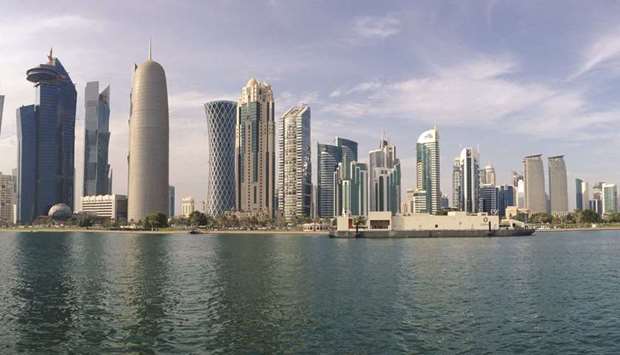Qatar inflation rates are expected to gradually ease over the coming months; Oxford Economics said and noted the country’s inflation will fall to 2.1% in 2023 from 4.3% this year.
In its latest update, Oxford Economics said: “In Qatar, rental and recreation and culture costs pushed inflation up to 6%, the highest since December 2021 and more than we expected, following a slower rise the previous two months.”
Oxford Economics has made an upward revision of its forecast of Qatar's fiscal balance. The researcher now says Qatar's fiscal balance has been forecast at 9% of GDP this year and 9.3% in 2023.
Similarly, the country’s current account surplus, according to Oxford Economics, will be upwardly revised to 16.8% of its GDP this year and 14.9% in 2023.
Qatar’s real GDP growth has been forecast at 3.6% this year and 3.5% in 2023.
According to Oxford Economics, the “IMF expects Mena region to sidestep global gloom and the fund retained its optimistic view on Mena, lifting 2022 and 2023 GDP growth projections a tad in its latest outlook, to 5% and 3.6%, respectively, and echoing our expectations of the region's continued outperformance next year.”
That said, we think the worsening global backdrop will limit growth in Mena to 3.2% in 2023, with a sharp deceleration in some GCC countries given the decision by Opec+ to cut oil production quotas.
Inflation data for September showed prices rising in Egypt, Qatar, Saudi Arabia, and Tunisia, while staying stable in Jordan. Tunisia's central bank tightened policy as price pressures persist, and we expect Egypt to follow suit and raise rates by at least another 100bps before year-end.
Moody's upgraded the outlook on Oman's Ba3 sovereign credit rating to positive, reflecting improvement in public debt metrics.
“We see the government maintaining a budget surplus this year and next, and for the debt-to-GDP ratio to drop to around 45% in 2023, from 63.6% in 2021,” Oxford Economics noted.
In its latest update, Oxford Economics said: “In Qatar, rental and recreation and culture costs pushed inflation up to 6%, the highest since December 2021 and more than we expected, following a slower rise the previous two months.”
Oxford Economics has made an upward revision of its forecast of Qatar's fiscal balance. The researcher now says Qatar's fiscal balance has been forecast at 9% of GDP this year and 9.3% in 2023.
Similarly, the country’s current account surplus, according to Oxford Economics, will be upwardly revised to 16.8% of its GDP this year and 14.9% in 2023.
Qatar’s real GDP growth has been forecast at 3.6% this year and 3.5% in 2023.
According to Oxford Economics, the “IMF expects Mena region to sidestep global gloom and the fund retained its optimistic view on Mena, lifting 2022 and 2023 GDP growth projections a tad in its latest outlook, to 5% and 3.6%, respectively, and echoing our expectations of the region's continued outperformance next year.”
That said, we think the worsening global backdrop will limit growth in Mena to 3.2% in 2023, with a sharp deceleration in some GCC countries given the decision by Opec+ to cut oil production quotas.
Inflation data for September showed prices rising in Egypt, Qatar, Saudi Arabia, and Tunisia, while staying stable in Jordan. Tunisia's central bank tightened policy as price pressures persist, and we expect Egypt to follow suit and raise rates by at least another 100bps before year-end.
Moody's upgraded the outlook on Oman's Ba3 sovereign credit rating to positive, reflecting improvement in public debt metrics.
“We see the government maintaining a budget surplus this year and next, and for the debt-to-GDP ratio to drop to around 45% in 2023, from 63.6% in 2021,” Oxford Economics noted.


